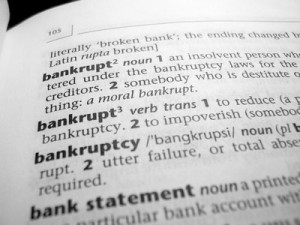 Chapter 13 bankruptcy is about reorganizing debt. Claims listed in the reorganization plan are treated differently depending on their class. For example, secured claims will either be paid through the plan by the trustee, paid directly by the debtor, or the collateral is surrendered and the debt is discharged. Priority creditors get paid in full in the bankruptcy. These include income tax liability and child support. Unsecured creditors get paid only if the debtor has disposable income and can afford to provide payment to these creditors. In some cases unsecured creditors get paid in full but in other case they get paid nothing. They can also receive a partial payment, but once again, payments to these creditors depends on the debtor’s disposable income.
Chapter 13 bankruptcy is about reorganizing debt. Claims listed in the reorganization plan are treated differently depending on their class. For example, secured claims will either be paid through the plan by the trustee, paid directly by the debtor, or the collateral is surrendered and the debt is discharged. Priority creditors get paid in full in the bankruptcy. These include income tax liability and child support. Unsecured creditors get paid only if the debtor has disposable income and can afford to provide payment to these creditors. In some cases unsecured creditors get paid in full but in other case they get paid nothing. They can also receive a partial payment, but once again, payments to these creditors depends on the debtor’s disposable income.
So, how is disposable income calculated? It depends on whether or not the debtor has above or below median income for their household size in the region in which they live. Debtors with below median income file a form called Schedule I showing their income and another form called a Schedule J which shows their budget. When you subtract the total of expenses on the budget from the debtors’ income after subtracting their deductions we get a net monthly income total. This number needs to be at least enough to pay the debtors’ plan payment. If the number is higher than his plan payment then the debtor has disposable income that should be paid towards the unsecured creditors.
In order to reduce net monthly income debtors may increase the expenses on their Schedule J. However, you can only increase these numbers so much before they become unreasonable. If the numbers on the Schedule J are higher than the standard IRS deductions for these expenses, then the trustee may decide that the expenses are unreasonable and object to confirmation (approval) of the plan. The test for calculating disposable income in above-median cases is a little more complicated, and will be addressed in my next article, so stay tuned.